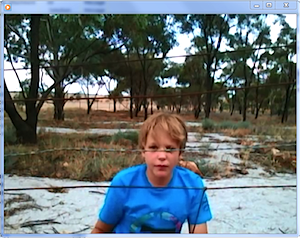Hale School is an independent school for boys in Perth, Australia, serving a large student body in grades 1-12. Michael Valentine is the Head of Online Learning.
by Michael Valentine
For 150 years, from farms and rural communities across our vast state, boys have come to Hale School in Perth, Western Australia to meet city-based schoolmates and begin life as boarding students.
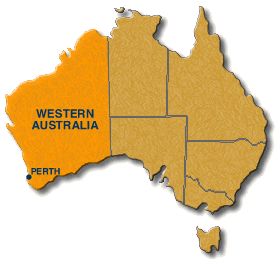 They come from country schools that might be large, small or perhaps have a population of less than 30 children. They come from regions where generations of the local townspeople have worked the land or mined the resources that lay beneath it. Some arrive after an hour’s drive by automobile, while others require a lengthy plane flight.
They come from country schools that might be large, small or perhaps have a population of less than 30 children. They come from regions where generations of the local townspeople have worked the land or mined the resources that lay beneath it. Some arrive after an hour’s drive by automobile, while others require a lengthy plane flight.
Their transition to a big city school and a boarder’s life has for generations been supported by Hale, and wonderful relationships between the school and rural communities have been forged. In 2013, we have taken a new step to ease the shift from rural educational settings to our vast, highly academic, technology-rich independent school. We have designed a programme, known as Hale@home where the boys enroll in our 1:1 Tablet programme and undertake a weekly synchronous connection with the Hale@home teaching team (the two of us!) while still living in their hometowns.
We are doing this in the year prior to the boys leaving home. The programme is currently engaging with 16 boys who will be boarding at Hale School for Year 8 (12-13 yr. olds) in 2014. It is proving to be an initiative that will change the face of a complex traditional transition experience, so familiar to boarding schools and boarding families across the world.
The Hale@home approach
The boys are still attending their local school but are connected and engaged with Hale School 24/7 through access to our portal and flipped resources. They can also e-mail or phone me for assistance any time. The Hale@home curriculum offers teaching and learning experiences designed to create opportunities for the boys to explore how technology can be used to personalise their learning and ultimately enhance their optimism about their prospects for academic life at Hale School next year. They are also working in our connected community with their future roommates, engendering a sense of “learning and preparing together” for their transition to the city.
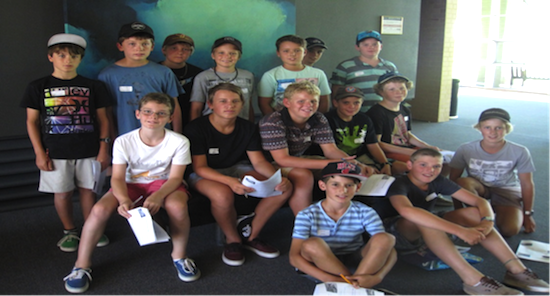
Before the school year began, the Hale@home boys gathered at a two-day Induction Camp on the Hale School campus, where we introduced them to their “virtual classmates” and their computers. Then they headed back to their home towns for their last year in local schools.
The Adobe Connect 9 platform allows us to create a dynamic virtual classroom context where the boys become presenters and reveal their weekly findings and creations to the whole class online. The boys see and hear each other as they take turns to display their individual responses to the literacy and numeracy tasks, which are as unique as the landscapes outside each boy’s bedroom window on any day.
Our project-style curriculum invites the boys to present video, audio, artistic, graphical, written or verbal responses to tasks which have a weekly theme. Their individual progress with basic technical skills and verbal presentation has been significant in this first term of the programme. [Editor’s note: school begins in January below the equator.]
A lack of full-developed skills in these areas has been a significant issue for previous generations of rural boys as they struggled to cope in the first months of a massive change in their personal lives. Academic priorities can be overwhelmed by personal issues among 12-year old boys so far from home. We can already see that their progress in technical and verbal skills is building their confidence.
A closer look at one lesson
The most recent work completed by the boys is a good example of the structure I employ to ensure each lesson is engaging and provides the boys with opportunities to demonstrate their unique interpretations and responses to literature. In their paper “Handbook of Emerging Technologies for Learning” (March 2009), Siemens and Tittenberger suggest teaching and learning activities fall into four categories; Dissemination, Discussion, Discovery and Demonstration. I use these four categories to plan a balanced learning experience.
The Dissemination category is regarded as potentially the most distracting and mundane. To avoid wasting valuable synchronous time online distributing key material and introducing new concepts I now “flip” this component. I create and record a 10-minute background presentation which the boys watch by logging into the portal sometime prior to our weekly lesson. We are then ready to move straight into the teaching and learning tasks and responses. Further responses to tasks are prepared independently by the boys during the week following the lesson and put on their OneNote files — ready to demonstrate to their peers in the next lesson.
“I Am David” is Anne Holm’s celebrated novel depicting a young boy’s escape from a World War Two prison camp and the subsequent adventures he experiences in his quest for freedom. As is the case for all of my English work, the unit involves reading and responding to only a short extract from the novel, in this instance it is Chapter 1.
The core question the boys had to respond to involved them being asked to explain why David had requested to take a bar of soap with him as he prepared to escape the camp. They had to prepare a one-minute video response. The boys responded strongly to the further request that they be seated behind barbed-wire as they presented their thoughts. Some boys sat behind their farm fences while others created their own barbed-wire and placed it in front of the computer’s camera lens. They were asked to provide three valid reasons which explained why David might have wanted to take the soap with him.
The presentation of their films to each other created enormous discussion as they explored each other’s reasoning (and ability to construct barbed-wire!). The other task for this unit of work was to explore a map of actual concentration camps and after identifying the location clues clearly evident in the text, extrapolate which camp David may have been held captive. The boys then used online maps and the directions David was given to follow once he was free, to trace his initial journey to board a ship in Thessalonica during his first few days of freedom.
An ambitious teaching & learning dynamic
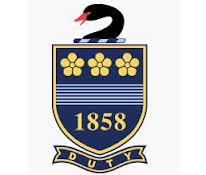 In its short history, Hale@home has already been celebrated as an example of 21st century teaching and learning. And it is. However, we knew when we began that we were not standing at the edge of a new and unexplored world. We were moving forward certainly — our teaching and learning landscape was evolving to utilise the opportunities now presented to us by the digital age — but we also knew that Australia has a long and proud history of distance education and the Internet is full of online school programmes.
In its short history, Hale@home has already been celebrated as an example of 21st century teaching and learning. And it is. However, we knew when we began that we were not standing at the edge of a new and unexplored world. We were moving forward certainly — our teaching and learning landscape was evolving to utilise the opportunities now presented to us by the digital age — but we also knew that Australia has a long and proud history of distance education and the Internet is full of online school programmes.
What we were so committed to achieving was building an environment where we could conduct the most memorable lessons, just like we strive to do every day in our Perth campus classrooms, with our audiences of 25 enthusiastic (albeit captive) boys.
Hale@home was a good idea, but as former Head of Hale’s Junior School and Middle School, I knew the challenge was going to be designing an online curriculum that would capture the attention of boys who have already spent the day attending classes at their local schools. Late in the afternoon they are seated alone in a room with a piece of technology, bereft of the usual verbal and physical cues, and they do not have the benefit of the shared educational momentum that a campus classroom full of bright lads and a fine teacher can generate.
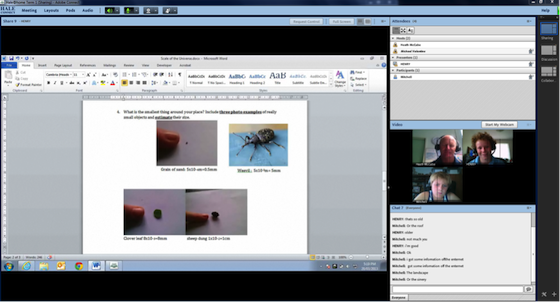
The boys were asked: “What is the smallest thing around your place? Include three photo examples of really small objects and estimate their size.”
Our vision for Hale@home was ambitious: to create a teaching and learning dynamic that would be memorably interactive, characterized by authentic learning, and certain to provoke unique responses from young students who were isolated but shared a common sense of purpose. We have pursued this vision in what is really the perfect educational paradigm: the needs of the boys determine the outcomes we seek, and as teachers we provide the discourse and the tasks which inspire the innovative thinking, structured responses and the skill development of the boys.
Boys of this age, wherever they are, require teachers with passion — teachers who project a sense of colour or theatre into their lessons. They require teachers who recognise that creative solutions and unique responses are to be celebrated and that rich interconnections, when identified, represent authentic learning. They need teachers who know learning can be demonstrated, even amplified, so powerfully using a computer.
The conclusion after our first term? We are building our perfect school! A staff of two, working at a distance with 16 adolescent boys, and no prescribed curriculum other than one we construct to suit the needs of our students. What a revolution!
The Hale@home experience for me has been overwhelmingly positive and reaffirming. As a teacher of long standing, I see 21st century learning evolving using the breath-taking technology available to us; and yet as we move forward, we also bring with us the very best of the past.
 Michael Valentine is the inaugural Head of Online Learning at Hale School in Perth Australia and previously the Head of both the Junior School and Middle School. A leader in innovative curriculum design incorporating literature, research and technology, Michael has presented keynote speeches, designed workshops and given addresses across Australia and abroad. It is his conviction that “we need to interconnect learning across discrete subject lines and richly vary the methods with which students demonstrate their learning.”
Michael Valentine is the inaugural Head of Online Learning at Hale School in Perth Australia and previously the Head of both the Junior School and Middle School. A leader in innovative curriculum design incorporating literature, research and technology, Michael has presented keynote speeches, designed workshops and given addresses across Australia and abroad. It is his conviction that “we need to interconnect learning across discrete subject lines and richly vary the methods with which students demonstrate their learning.”
John Norton
Latest posts by John Norton (see all)
- I'm a "Learner First" in a Whole New World - July 1, 2013
- Hale@home: Easing Student Transitions via Online Learning - May 17, 2013
- Our Top 13 Voices Posts for 2012! - January 1, 2013

